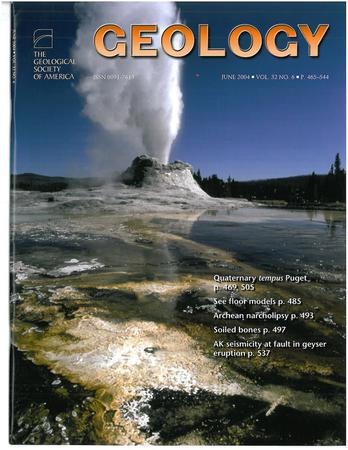Landscapes on the edge: River intermittency in a warming world
IF 4.6
1区 地球科学
Q1 GEOLOGY
引用次数: 0
Abstract
Sediment transport in rivers is not steady through time. Highly intermittent river systems, which only transport bedload during the most significant flow events, are particularly sensitive to changes in climate and precipitation patterns. People and landscapes can be vulnerable to fluvial processes, and quantifying river intermittency is critical for assessing landscape response to projected changes in precipitation extremes due to climate change. We generated new constraints on recent to modern fluvial intermittency factors—the frequency at which bedload is mobilized in a river—based on field measurements in the Corinth Rift, Greece, and Holocene sediment accumulation rates. Results reveal some of the lowest documented intermittency factors to date, showing Mediterranean rivers can transport an entire annual sediment load in a rare storm event. Coupling intermittency calculations with historical flood and precipitation data indicates these rivers transport bedload during one storm every ~4 yr, associated with rainfall >50 mm/d, and subsequent floods; this hydroclimate is typical across the Mediterranean region. Furthermore, climate models predict precipitation extremes will increase across Europe, and the frequency of events that surpass thresholds of sediment transport will increase significantly, potentially causing sediment loads to double by 2100 CE. As the area of arid land likely to host intermittent rivers also increases, sensitive landscapes are on the edge of significant geomorphic change, driven by global warming.边缘景观:变暖世界中的河流间歇
河流中的沉积物迁移在时间上并不稳定。间歇性很强的河流系统只在最重要的水流事件期间输送泥沙,因此对气候和降水模式的变化特别敏感。人类和地貌都很容易受到河流过程的影响,量化河流的间歇性对于评估地貌对气候变化导致的极端降水变化的响应至关重要。我们根据在希腊科林斯裂谷的实地测量结果和全新世沉积物累积率,对近代至现代的河流间歇因子--河床负荷在河流中的移动频率--提出了新的约束条件。结果表明,这是迄今为止有据可查的最低间歇系数,表明地中海河流可以在一次罕见的风暴事件中运走全年的泥沙量。将间歇性计算与历史洪水和降水数据相结合,表明这些河流在每隔约 4 年的一次暴风雨期间(降雨量大于 50 毫米/天)以及随后的洪水中输送泥沙;这种水文气候在整个地中海地区都很典型。此外,据气候模型预测,整个欧洲的极端降水量将增加,超过泥沙输运阈值的事件频率将显著增加,到公元 2100 年,可能导致泥沙负荷增加一倍。随着可能形成间歇性河流的干旱土地面积的增加,敏感的地貌正处于全球变暖导致的重大地貌变化的边缘。
本文章由计算机程序翻译,如有差异,请以英文原文为准。
求助全文
约1分钟内获得全文
求助全文
来源期刊

Geology
地学-地质学
CiteScore
10.00
自引率
3.40%
发文量
228
审稿时长
6.2 months
期刊介绍:
Published since 1973, Geology features rapid publication of about 23 refereed short (four-page) papers each month. Articles cover all earth-science disciplines and include new investigations and provocative topics. Professional geologists and university-level students in the earth sciences use this widely read journal to keep up with scientific research trends. The online forum section facilitates author-reader dialog. Includes color and occasional large-format illustrations on oversized loose inserts.
 求助内容:
求助内容: 应助结果提醒方式:
应助结果提醒方式:


